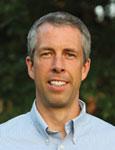In the February WOW blog post “Talking about Wetlands,” Tracy Hames notes that wetlands benefit ecosystems by processing nutrients such as nitrogen. I recently had the opportunity to learn more about how wetlands reduce nitrogen while researching and writing about a restoration project by Sand County Foundation in south-central Wisconsin. This important ecosystem service is facilitated by anaerobic bacteria that break down nitrogen and return it to the atmosphere. Slow-moving water creates the low oxygen conditions under which these bacteria convert nitrate to nitrogen gas. This process physically removes nitrogen from the aquatic system.
There is good reason to be concerned about nitrogen and phosphorus in water bodies around the country and world. Excess nutrients in waterways have been associated with an array of environmental problems ranging from polluted wells to algae blooms. Hypoxic “dead zones” in locations such as Green Bay and the Gulf of Mexico have created a particular focus on nutrient loads in the Great Lakes and Mississippi River Basin.
To demonstrate how the denitrification ability of wetlands could be harnessed to improve agricultural land management, in 2009 Sand County Foundation began to restore a low-functioning wetland on a farm near Baraboo. The site is adjacent to the Leopold Memorial Reserve (LMR), home to Aldo Leopold’s famed Shack featured in Part I of A Sand County Almanac. Funded by a grant from the Natural Resources Conservation Service (NRCS), this ongoing effort involves collaboration between Sand County Foundation and Montgomery Associates Resource Solutions, an environmental engineering firm. The project drew from extensive research on floodplain dynamics that has been conducted on the Reserve over the past three decades.

Map of site location and close-up of the total watershed acreage drained by the ditch.
The goal of this restoration was to create a demonstration of wetland enhancement that reduces nitrogen loads, fits into a working agricultural landscape, and can be easily replicated on other farms. Approximately 5.5 square miles of agricultural land south of Interstate 90-94 flow to a drainage ditch carrying agricultural runoff that traverses the site and ultimately empties into the Wisconsin River to the north. The site of the LMR project was a degraded wetland connected to the drainage ditch. Vegetation in the wetland was dominated by invasive reed canary grass.
Montgomery Associates initiated monitoring of the LMR site beginning in 2009 to guide the design of the restoration. Data collection included soil surveys, water level monitoring, water quality analysis, and wetlands delineation. Additionally, a review of aerial photographs and discussions with local farmers provided insights on the extent and frequency of historic flooding. Project planners determined that high water typically overflowed the ditch banks and inundated the wetland several times per year, providing an opportunity to capture and treat some of this water.
In late 2010, Montgomery Associates constructed two shallow excavations, referred to as “scrapes,” in order to enhance the existing wetland area. These constructed wetlands totaling 3.4 acres temporarily hold water that overflows the ditch during large rainfalls.

Layout of wetland with arrows indicating direction of flow and berm design.


North scrape during (left) and after construction.
To increase the floodwater storage of the wetland, Montgomery Associates also constructed a low berm between the scrapes and the ditch, with multiple overflow points to allow floodwaters to spill laterally from the ditch into the scrapes. Site engineers seeded native grasses and forbs in the wetland with species selected to balance ecological function and visual appeal. The intent of the design is to capture ditch overflow several times per year and to retain water in the scrapes long enough for denitrification to occur, similar to nearby floodplain sloughs. Between rainfalls, ponded water leaves the wetland through infiltration and evaporation. Without the capture provided by the scrapes, nitrogen-laden water runs off directly into the Mississippi River system and contributes to the dead zone downstream at the Gulf of Mexico.


South scrape (above) and north scrape after establishment of native grasses and forbs.
Monitoring results indicate that this is a promising way to reduce nitrogen inputs to waterways (see figure below). An area that was not being actively farmed now allows for measurable nitrogen load reduction thanks to a simple modification to the landscape. Thus, this type of project has potential for widespread adoption as a low-cost strategy to improve water quality in the Mississippi River and other water bodies.

Ditch stage and wetland nitrate concentration after typical rain event.
Although relatively inexpensive compared to other alternatives, scaling up nutrient removal practices still depends largely on cost. Investment by NRCS and other federal partners can help lower the cost to private landowners of this new approach to restoring ecosystem services. Innovations such as nutrient abatement agreements between upstream agricultural producers and downstream water users would provide additional incentives for farmers to reduce nutrient inputs to area waterways. Participating farms in this scenario would be one step closer to Aldo Leopold’s call for improved conservation practices by citizens: “Conservation can accomplish its objectives only when it springs from an impelling conviction on the part of private land owners.”




